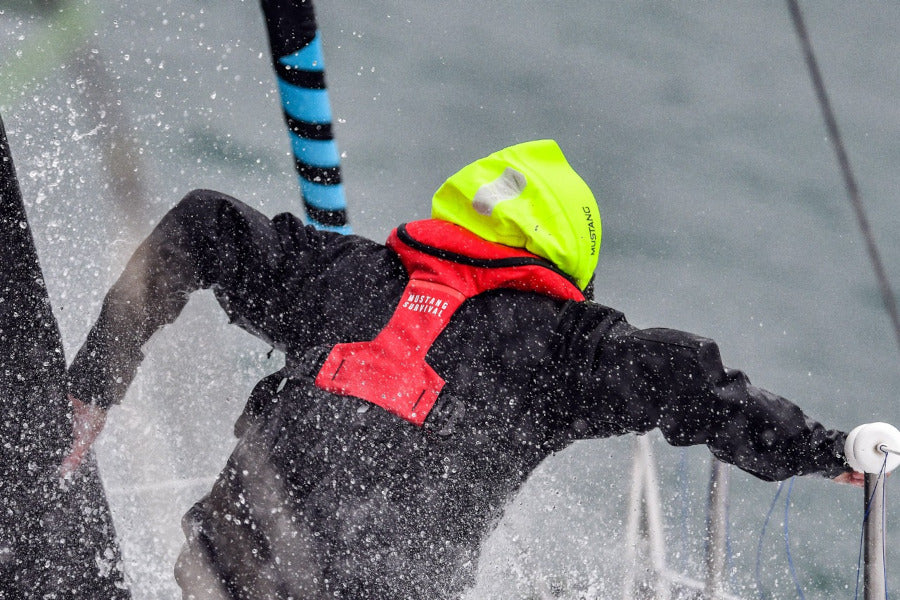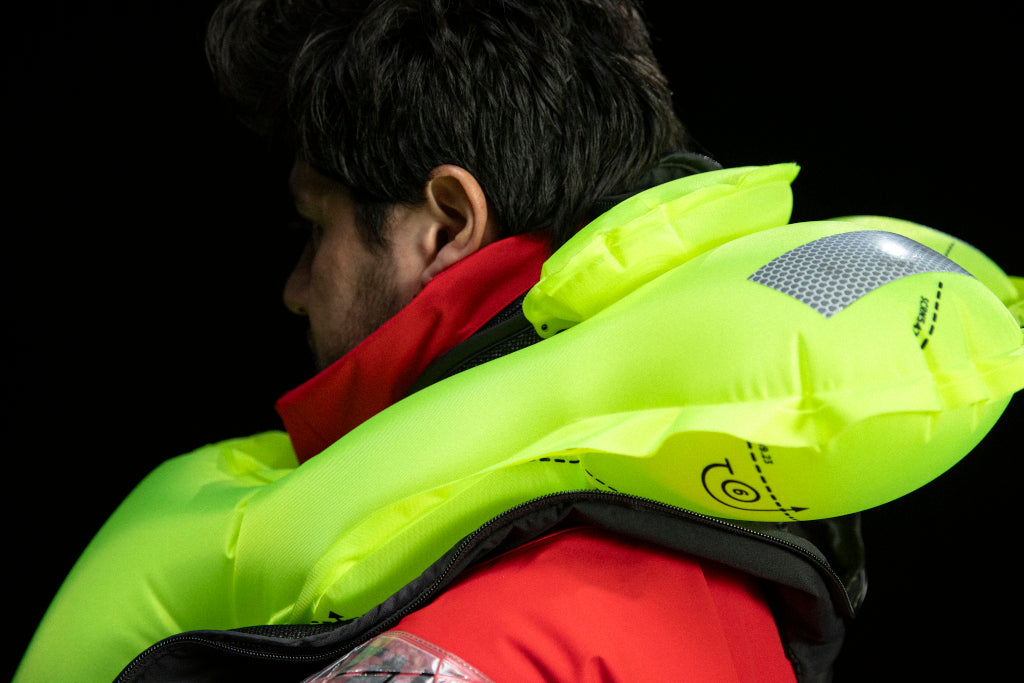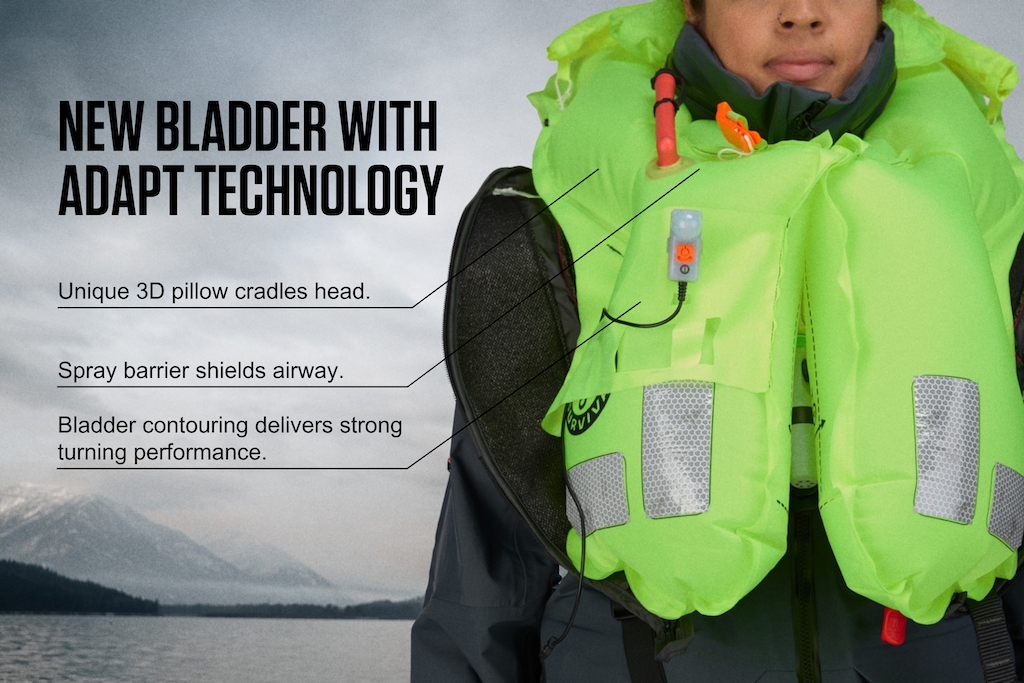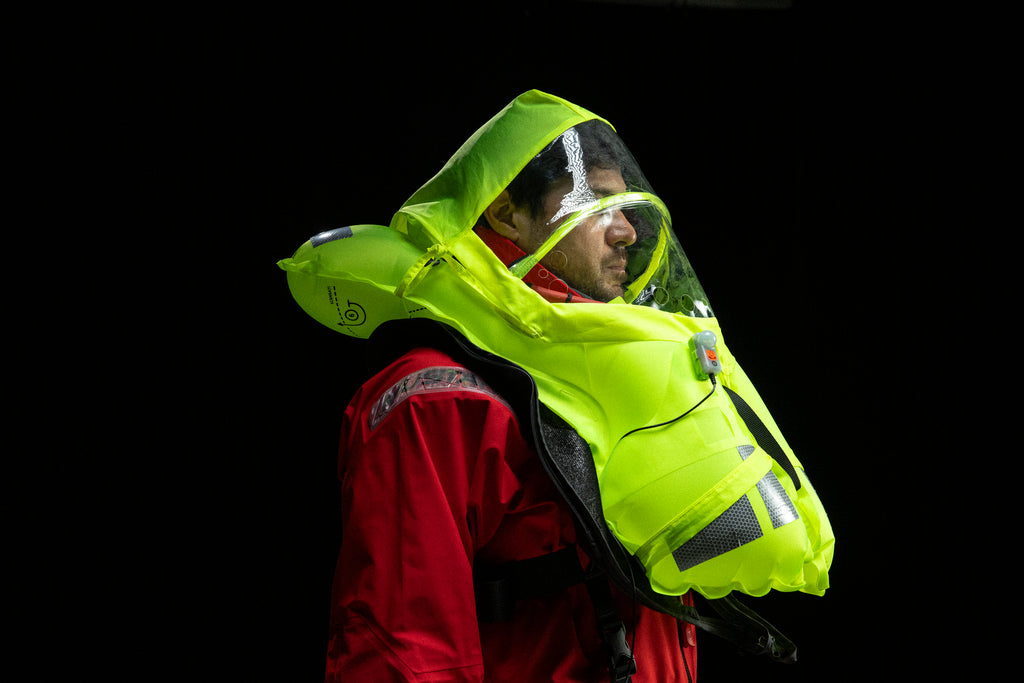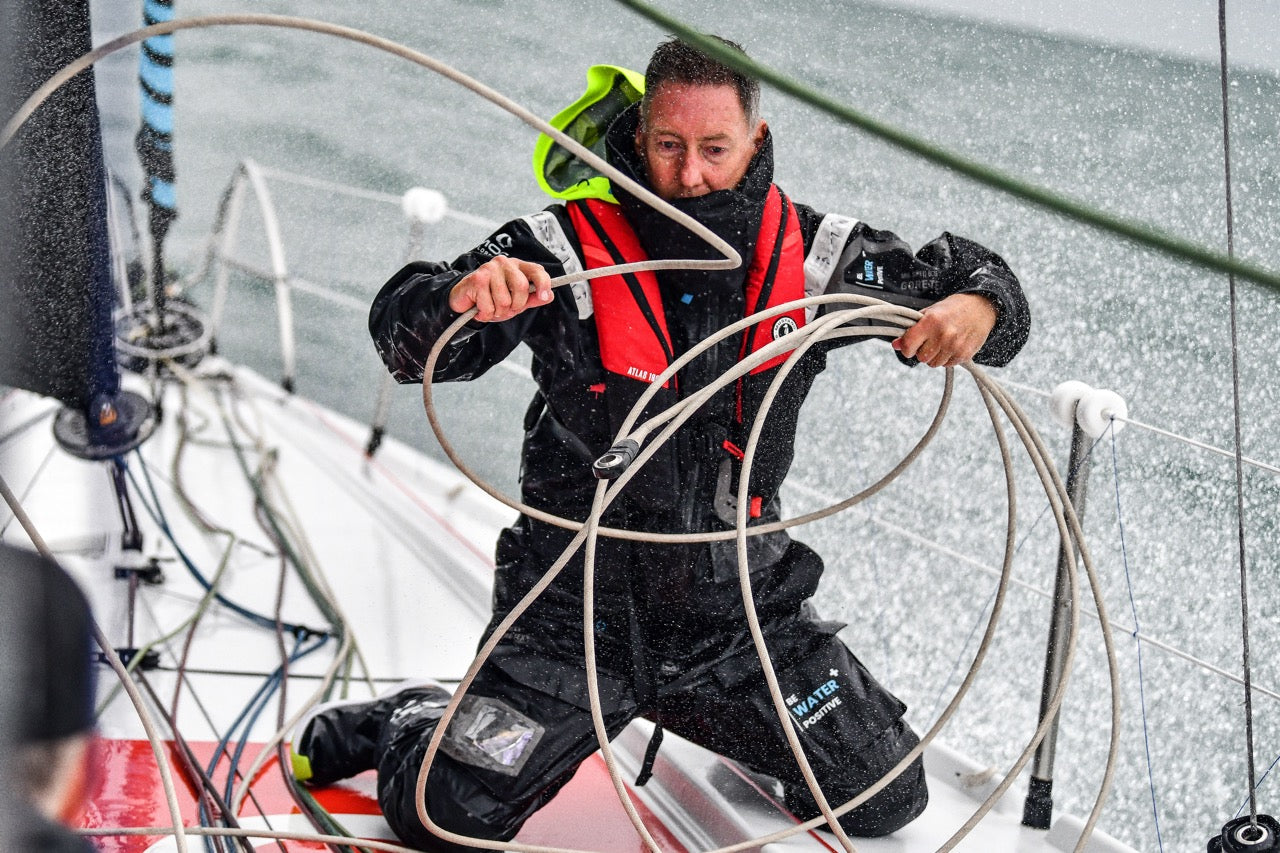
Safety First: 10 Insights into the Atlas 190 Life Jacket
After expanding into the UK market in 2022, we set out to create our first ISO-certified life jacket to add to our line-up of available technical clothing and outerwear. The resulting Atlas 190 utilises our groundbreaking new ADAPT Technology (ADvanced Airway Protection & Turning.)
We sat down with Nigel Parkes, our International Managing Director and developer of the product, based in the UK, to discuss the design and creation process and what it means for marine safety.
What was the goal of creating the Atlas 190?
The primary goal was to make the most comfortable life jacket possible. Traditionally, to create a very high-performing product, you end up with a life jacket that inflates tightly around the neck, which in turn ultimately makes for a very tight, close-fitting jacket when packed. We wanted to design a product that is very free around the neck when you're wearing it in its packed state but offers ultimate safety when inflated.
How did you achieve the goal of making it comfortable?
We designed the Atlas 190 bladder to have a very wide neck area but also to fit very close to the body to give the wearer the highest level of safety. We minimised the number of folds in the bladder to make the packed product flat and supple. Equally important, to enhance that ‘all-day comfort’ is the weight of the product – we agonised over how to make the products as light as possible – employing a laminate of materials making the cover soft, strong and durable in the right places. There's a lightweight twin adjustment system for rapid adjustment on the sides to customise the fit; in addition to the front, where we've now got a lightweight aluminium interlocking buckle with a release tag for donning and doffing. No longer do you have to undo and readjust the fit each time, which invariably happens when a PFD adjusts on the front interlock.
LEARN MORE ABOUT THE ATLAS 190
What does this mean functionally for the wearer?
Even when inflated, wearers have a huge amount of movement for their heads, and will feel free and unrestricted, so they can see what's happening around them. Additionally, if you have a big collar or one of our EP 6.5 Ocean Racing Jackets or something similar, there's enough room to wear it underneath.
How does this design accommodate women more comfortably?
We shaped the chest area to create a slight void. So, for women, it doesn't press down too tightly; it follows the shape and contours of your body, making it much more comfortable when inflated.
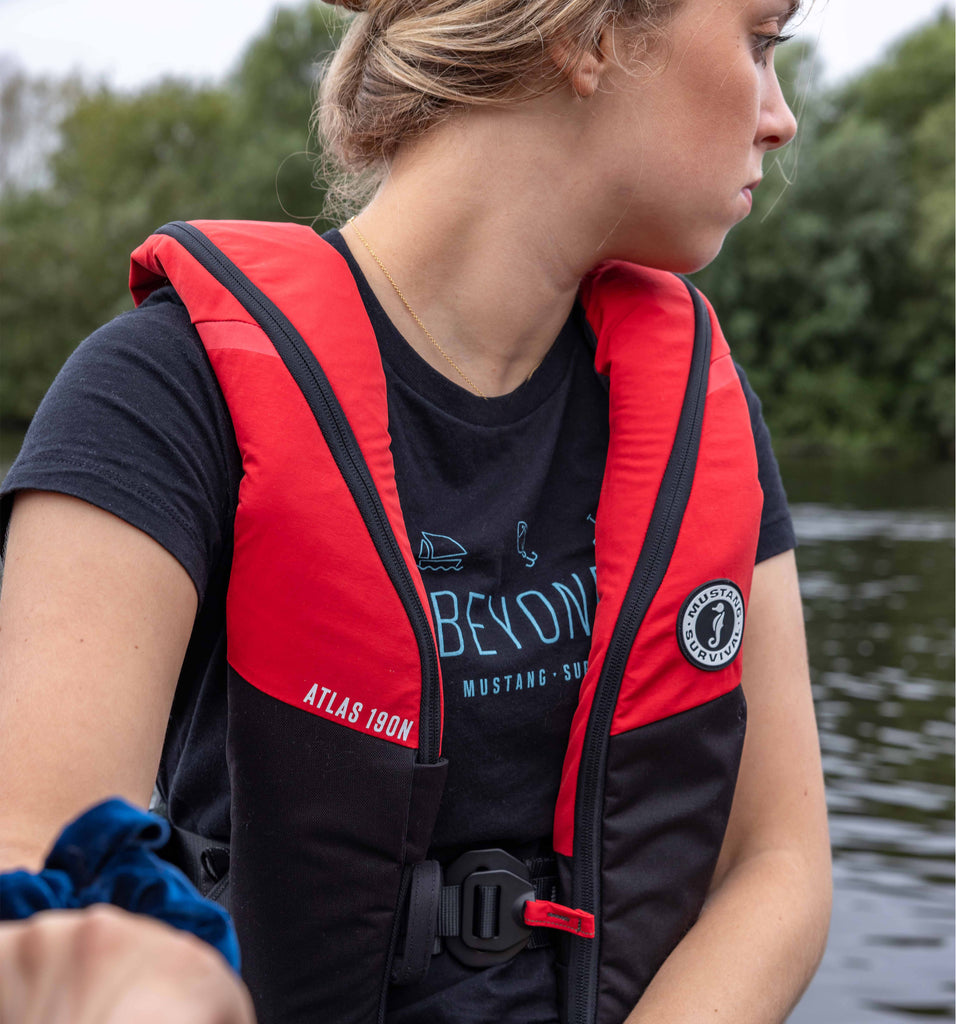
How did you achieve the goal of making it high-performance?
We created a new bladder design that differs from anything currently available. ADAPT Technology, short for Advanced Airway Protection & Turning, embodies our approach to bladder design. The goal of any life jacket is to turn the user face up and protect their airway. ADAPT Technology encompasses three main design characteristics that support this: a wide and stable head pillow with a 3D headrest, contoured lobe shaping, and overlapping baffle barriers.
What is unique about the integrated head pillow?
The Atlas 190’s 3D headrest is slightly different from what's currently available on the market. Freeboard is the distance between the corner of the wearer's mouth and the water. As the head tilts, one side automatically lowers, creating less freeboard. The pillow on the Atlas stops the head from moving too far; it forms a little U around the back of the head and prevents it from lulling over, keeping the wearer safer. The freeboard requirement is at least 100mm (4 in), and the Atlas 190 averages 130mm (5.2 in), an impressive distance.
How do the contoured lobes turn the wearer face up?
When the wearer is upside down in the water and needs to self-right, the buoyancy lobes will always pivot around the same point. Basically, although symmetrical in design there's a bit of instability built into it; as soon as one lobe starts to go over to one side, the other lobe will follow it, which makes for fast turning, whilst the neck section doesn’t split or move apart so you remain nice and secure.
Why are the baffle barriers important?
In foam flotation aids or products providing 100N or less buoyancy, wearers generally float vertically, whilst, in a lifejacket, you will float at approximately 45° degrees or higher. In strong winds, the feet trail and drag in the water, becoming a sea anchor, as the buoyant support or head above the water catches the wind. Surface spray from the top of the waves and rain will be coming straight at their face, making for a very uncomfortable and dangerous experience. The baffle barrier prevents this being directed at the face and additionally closes the gap around the neck to minimise flushing water from shooting up underneath.
How do the emergency light and sprayhood work with the Atlas 190 DLX?
In our deluxe model, the safety light and sprayhood come as standard. The light attaches to the front of the jacket, is automatically triggered, and starts flashing when the sensor is submerged. It is mounted to the highest point of the jacket to give as much visibility as possible to anyone who is trying to rescue or spot the wearer.
The sprayhood is manually pulled up and over the head and secured with two loops around the bladder lobes. It's quite easy to get on and off and doesn't require too much dexterity, so it can be fitted with one hand if needed. The hood also has a unique slide system that gives it some rigidity and the best amount of support possible when in use. This is essential to build and help shield the user from surface water and the weather as I mentioned earlier.
What has the response to the Atlas 190 been so far?
Everyone who's had it on says they do not know they're wearing it. This has been great to hear as we set out to create a life jacket that can be worn comfortably all day long.
We are excited to be launching this new life jacket in the UK!
LEARN MORE ABOUT THE ATLAS 190
